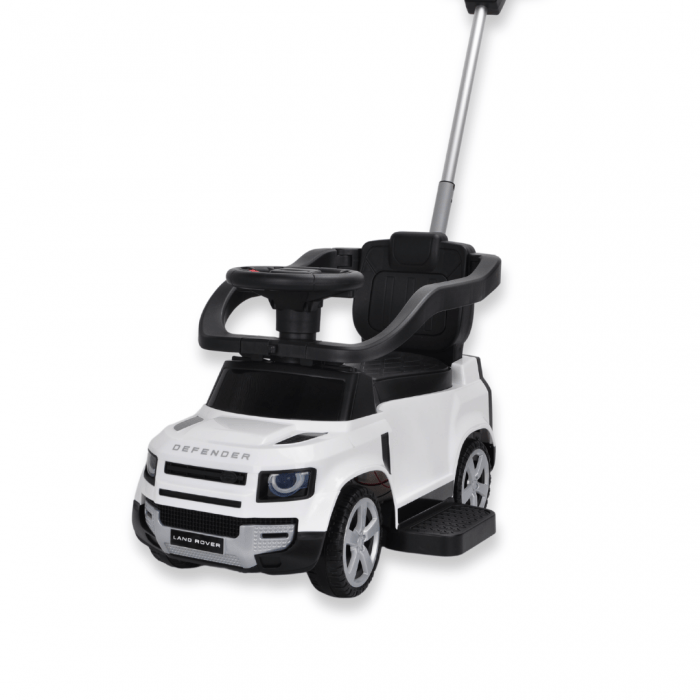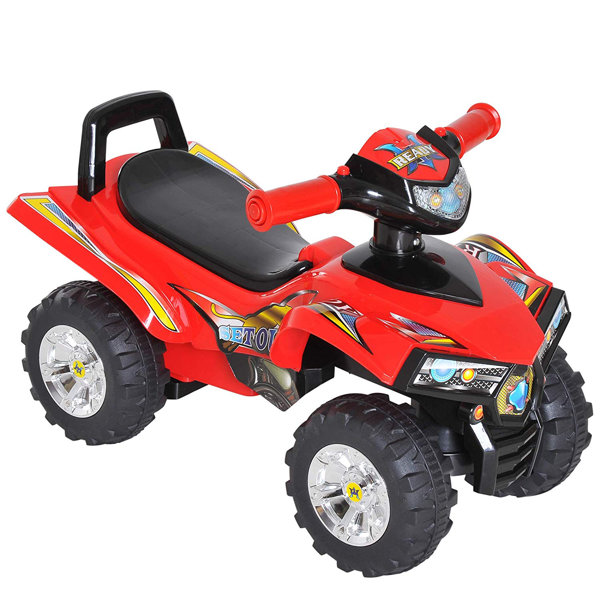Top Tips To Selecting Remote Control Childrens Cars
Wiki Article
What Should I Know About Battery Life And The Charging Time Of An Electric Ride-On Kids Car?
Understanding the battery's lifespan and charging time of an electric ride-on kid' car is essential for ensuring uninterrupted playtime and optimal performance. Here's everything you must be aware of: Battery type -
Most electric ride on cars for kids are powered by rechargeable batteries. They are either Lithium-ion or lead-acid. Lithium ion batteries offer higher battery life than lead-acid batteries and charge more quickly.
Battery Capacity
The battery's capacity is measured in watts-hours, or ampere-hours. Large capacity batteries permit longer playtime, without needing recharge.
Run Time -
The run-time of an electric ride-on vehicle is the length of time it can run continuously with a single charge. This can vary depending on various factors like capacity of the battery, motor power, terrain, as well as the weight of the person riding.
The typical run time for electric ride-on vehicles is between 30 minutes and two hours. However, some batteries that have high capacity may have longer durations.
Charging Time
Charging time refers to the amount of time needed for the battery to fully recharged after it has been exhausted. The charging time depends on the specifications of the charger as well as the battery's capacity and charging method.
Charge times vary between 8 and 12 hours to complete charge for electric rides-on cars. Some models provide faster charging times, particularly when using lithium-ion cells.
The longevity and safety of batteries are dependent on charging the battery according to the guidelines of the manufacturer. Undercharging or overcharging the batteries can have a negative impact on their performance and lifespan.
Charging Method Charging Method
Chargers for electric ride-ons are typically connected to standard electrical outlets. Certain models might have fast-charging capabilities or include a smart charger that monitors the battery's status of charge and adjusts the charging rate accordingly.
To avoid any harm to the electrical system or battery Make sure the charger and port are compatible with the chargers that come in your ride-on car.
Additional Batteries
Some electric ride on cars provide the option of buying additional batteries or batteries to prolong the playtime. It is possible to replace worn-out batteries with ones that are fully charged, so you'll have less duration between sessions.
If you know the battery life and charging times of an electric ride-on kids' vehicle, you can ensure that your children will have fun and uninterrupted playtime as they explore their surroundings. Regularly charging the battery and following appropriate charging guidelines will maximize battery life and performance. See the top kids cars for website tips including electric toy car, car for toy, a toy car, toy the car, childrens digger, car toy toy, ride on toy, car on ride, two seater childrens electric cars, remote control childrens car and more. .

What Kind Of Maintenance And Assembly Specifications Are Required For Children's Ride-On Vehicles?
For the best performance, safety and long-term durability, kid's rides-on cars require some assembly. Below are the typical assembly and maintenance requirements of children's ride-on cars.
The majority of ride-on cars are not fully assembled upon arrival, and need some assembly. It usually involves attaching parts like the wheels, seats, steering wheel and other components according to the manufacturer's instructions.
Follow the assembly guidelines carefully and ensure that each piece is securely connected. Following the instructions to complete the assembly, use the equipment and tools provided.
Cleaning -
To ensure that the car you ride in to look its best and perform properly, regular cleaning is essential. Make use of a soft sponge or cloth soaked in mild soap and water to wash the exterior surfaces.
Pay particular attention to areas prone to buildup, such as the wheels, tires, and undercarriage. Brush or use a tooth brush to scrub areas that are difficult to reach and eliminate the stubborn dirt.
The use of harsh chemicals, abrasive cleaners, or high pressure water sprays can damage the paint or electronic components of the ride-on vehicles.
Battery Care -
To keep the battery running efficiently and extend the life of a battery that is a ride-on, it is crucial to take good treatment of your battery. Here are some guidelines for taking care of your battery.
Charge the battery prior to each use, and fully after. This will ensure that you get maximum performance.
Avoid charging too much or allowing the battery to be connected to the charger for prolonged time, as this could harm the battery and shorten the battery's lifespan.
When not in use, store the ride on car and battery away from direct sunlight or extreme temperatures.
The terminals of the battery should be inspected periodically to check for corrosion and damage. They can also be cleaned using a wire bristle or terminal cleaner if required.
If the battery is no longer charging or shows signs or wear, replace it.
Tire Maintenance -
Regularly check tires for signs that they're getting less air pressure, are damaged or damaged or worn. If necessary, inflate the tire to the recommended air pressure using a bicycle pump or compressor.
Check the tread pattern of your tires to identify obstructions and foreign matter that could cause punctures or flats. Replace or repair damaged tires by removing any obstructions.
Lubricate wheel bearings and axles at regular intervals to reduce friction.
Sometimes, repairs or replacements are needed.
Ride-on vehicles may require repairs or replacement parts due wear or damage.
Check for indications of a malfunction or degrade for example, a weird sound or erratic behavior, or power loss. For troubleshooting or repair options, consult the manufacturer's instructions.
Replace damaged or worn out components as soon as possible to prevent any further damage, and to ensure the safety and the functionality of the vehicle that rides on.
Following these assembly instructions and maintenance tips will ensure your child has hours of fun while playing safely. Follow the best read this about McLaren kids car for more tips including electric rideons, ride a toy, remote control childrens car, cars pedal car, toy cars toy car, car for toy, toy and car, kiddies cars, childrens digger, riding digger and more. .

What Are The Different Kinds Of Remote Controlled Kids Cars? Pros And Cons?
The diverse sizes, designs, prices, and types of children's cars with remote controls are available to meet the requirements and budgets of everyone. The pros and cons along with the dimensions styles, models, and prices of remote-controlled children's vehicles are listed below.
Electric RC Cars – Batterie-powered remote-controlled vehicles that can be used both for indoors and outdoors. They are available in different styles such as trucks or buggies.
Nitro RC Cars : Gas-powered vehicles that operate remotely and offer more performance, but need more care. They're bigger and typically cost more than electric RC Cars.
Scale Models can be controlled remotely that include cars, trucks and planes. Scale models are available in a variety of sizes, from 1 10- to 1-24 inches With larger scales offering more detail and realism.
Sizes -
Remotely controlled children's cars are available in a variety of dimensions. These range from small micro-sized copies to large-scale replicas. The size of a car can impact the performance of it and its speed.
Micro-sized vehicles are compact and light, and therefore perfect for indoor play and use by young children. Cars that are larger in size are more powerful, durable and are therefore ideal for off-road and outdoor racing.
Prices are
Prices for remote-controlled children's vehicles depend on the factors that determine them, such as size, features and brand.
Micro-sized electric and nitro powered cars for RC are available in sizes that range from $20 to $100.
Models and high-end hobbies RC cars range from a few hundred dollars up to 1000 dollars, depending on the degree of detail.
The pros and cons of -
Pros -
Entertainment - Remote control children's vehicles provide hours of entertainment and excitement for adults and kids alike.
Skills development Learning to drive an RC vehicle can help children develop their spatial awareness and hand-eye co-ordination.
Social Interaction RC cars can be enjoyed with families and friends, encouraging interactions and socialization.
Aftermarket parts, upgrades, accessories and other aftermarket items can be used to modify numerous RC cars and increase their performance.
Cons
Costs - A premium model that has advanced features can cost a lot, particularly for hobby grade models.
Learning Curve: Operating a RC Car is a process that requires training and experience as well as younger children could struggle at first.
Maintenance - Regular maintenance is required for cars with RC engines, such as cleaning, lubrication, and repairs.
Safety concerns - RC car safety could be impacted due to electrical hazards, collisions and other hazards when the vehicles aren't operated with care and supervision by an adult.
All children of ages can appreciate remote control cars. It is crucial to take into consideration things like the cost, size, and safety before choosing the best model. Hobby-grade RC cars may be more appropriate for older children and enthusiasts, while simpler models are suitable for younger children and beginners. Check out the top rated ride on toys kidscars.co.uk advice for blog advice including toy cars toy car, toy toy cars, electric rideons, pedal car, ride on digger, two seater electric cars, digger ride, two seater childrens electric cars, electric two seater cars, ride ons and more. .
